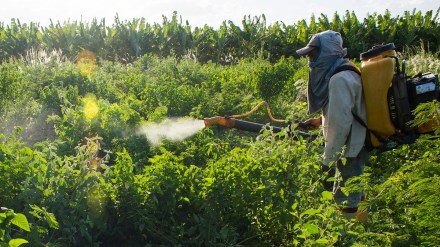By Raju Kapoor,
In 2024, India’s agrochemical industry is gearing up for substantial growth, with expectations to hit US $18.1 billion by 2025. This upswing is driven by practical factors, including significant R&D efforts and key policy reforms affecting trade, marketing, production, manufacturing, product registration, and intellectual property rights. These policy changes promise to boost agricultural output, contributing significantly to India’s economic expansion.
The agrochemical industry in at a critical crossroads today. It grapples with a slowdown due to global economic conditions, faces heightened competition from China, below-average monsoons impacting Rabi sowing, and concerns about El Nino affecting agriculture. Stakeholders are pressing for innovation, urging the development of new molecules and approaches to meet evolving demands sustainably.
Key Growth Drivers In 2024
Severe climate conditions in 2023 caused a 1.8 per cent fall in the Gross Value Added (GVA) in agriculture. However, the industry anticipates the consumption-driven rationalization of overstocked inventories to ease working capital concerns. While the sector may not experience robust growth due to existing channel inventory, steady farm-level consumption will persist.
Additionally, India witnessed a reduction in the sown area for oilseeds and pulses, a new challenge. However, commodity prices are favourable and expected to remain stable due to adequate crop coverage, except for Rabi crops. This, coupled with improved farmer income, is poised to contribute to a better return for the agrochemical industry. Key interventions at three levels—technological, international markets, budgetary support and regulatory norms—are crucial to overcoming this phase and charting a path forward.
Technological Innovation: The industry is experiencing a surge in tech-driven services. Notably, the adoption of drones for agrochemical applications is gaining traction, with the Central Insecticides Board (CIB) greenlighting 479 pesticide formulations for ad hoc drone-based spraying. Drones, especially for nano urea and nano DAPs, are poised to play a pivotal role in boosting efficiency and sustainability, further supported by the Central government’s introduction of the Drone Didi scheme. The synergy between fertilizers and pesticides is set to optimize drone utilization, making the Drone-as-a-Service model (DaaS) more economically viable.
In addressing the cotton pink bollworm issue, advancements in technology have become imperative. As existing GM technology is losing its effectiveness against pests like Pink Bollworm, newer agrochemical options are expected to gain traction. Precision agriculture, boosted by agritech, could significantly increase farmers’ incomes, reduce costs, and contribute an estimated US $95 billion to the economy, as per McKinsey. The introduction of new pesticides may rise with the government and the Central Insecticides Board planning to expedite approvals this year.
Regulatory Support: The success of precision agriculture interventions hinges on the completion of the government’s digital Agri stack and inviting active industry participation. Regulatory support is crucial for introducing newer products, including herbicides, fungicides, and next-generation pesticides. Crucial for regulators to improve efficiency to facilitate faster introduction of newer molecules and formulations. Facilitating the use of drones for spraying agrochemicals is contingent upon a regulatory framework that supports the removal of substandard drone players and sets standards that instil the farmers’ confidence in the DaaS concept.
Budgetary Support: To incentivise innovation, the government should consider measures such as tax breaks for agrochemical R&D expenditure, extending activities promoting right stewardship for Good Agricultural Practices at the farmer level, rationalising GST on agrochemicals to 12% (from current 16%), and allocating sufficient budgetary resources to introduce performance-linked incentives (PLI) for ‘New’ agrochemical manufacturing in the country.
In the dynamic landscape of India’s agricultural sector, the persistent plight of Indian farmers, grappling with annual losses exceeding Rs. 2 lakh crores due to pests, remains a pressing concern that demands urgent attention from the Government and stakeholders.
International Market Dynamics: Exports from India, comprising 55% to LATAM and US markets, may face challenges in the immediate term, with struggles likely to persist until the November cropping season. The threat of potential dumping from China looms large, as they continue to increase pesticide manufacturing capacities. If they look to lower prices to expand their market share in India, local markets can potentially be disrupted substantially.
The plant health business is anticipated to grow rapidly. Consequently, the market size of plant growth regulators forecasted to reach US$104.6 million by 2026, driven by the uptake of soil health management products. Similarly, the use of biologicals (mainly microbials) can grow at more than 30% if the government sets up the right regulatory regime facilitating the import of high-performance microbials until they get manufactured at home.
In conclusion, embracing new-generation products is imperative to seamlessly integrate technological developments into farming practices, propelling the sector forward. Policy decisions can help India realise this growth and ultimately make a substantial impact on improving farmers’ income.
(The author is Director, Industry & Public Affairs, FMC India)
